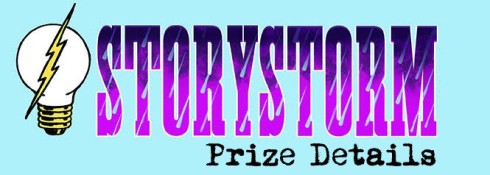by John M. Cusick
Picture this: you’re at a midtown restaurant and you see two people having an animated conversation about books. You know this is a favorite lunch spot for publishing folk, so you guess (correctly), you’re witnessing one of those fabled agent/editor lunches. No, there are no empty martini glasses rolling across the table—you can just tell from the way one diner is animatedly talking about a new manuscript she’s working on. As she describes the plot, you find yourself pulled in—you’re intrigued by the details, maybe a few of them even make you smile. And just when you think “hey that’s a pretty clever idea,” the speaker presents another twist, another layer of tension of complication, and before you know it, you’re thinking “I’ve got to read this!”
We typically think about agents pitching projects to editors, and it’s true that as an agent I’m presenting new stories and manuscripts to my editor colleagues all the time. But oftentimes, at lunches like the one described above, the person raving about the wonderful new book they’ve acquired is just as likely to be the editor. And that’s great! As an agent, I want to know what my editors are excited about. What are they working on that’s inspiring them? What new book are they dying to share with the world?
I wish aspiring writers could hear how editors talk about their books at lunches and in-person meetings like these. I think it would be such an education for authors looking to generate compelling and commercial ideas of their own. On the one hand, editors speak from a place of pure, genuine enthusiasm—these are the books they’ve already fallen in love with, offered on, bought, reread a dozen times, and thought about for hours on end. At the same time, editors are often able to speak about their current titles with a kind of focus and precision that many struggling pitch-writers could learn from. Not only does the editor know her book inside out, she’s also a) had it pitched to her (by the author’s agent), and b) has had to pitch it herself—to her team, her publisher, her sales and marketing departments.
Firstly, editors often start with a compelling detail (usually with a smile on their face as they recall a favorite image or concept): “So, she’s a roller-derby all-star,” or, “His best friend is his hairless cat.” Instantly there’s something different or unusual to pull you in, snag your interest.
Secondly, there’s a layer of conflict (another opportunity for a unique detail): “She’s got to save her mom’s holistic pottery center” or “He’s finding first love against the backdrop of the Challenger shuttle disaster.”
This is often where most author pitches begin and end— with the set up and the basic conflict. But editors often go further in their off-the-cuff (or sometimes very polished) descriptions. There’s almost always a third layer, the thing that happens as the story unfolds: “She meets her idol who turns out to be her enemy,” or “He gets expelled for something his brother did.” Etc. etc.
The point is, you’ll notice that published books often have interesting details and “hooks” stacked on top of each other. There are multiple ins to the story, multiple elements that can potentially pull in a reader. If the roller-derby bit didn’t catch your attention, the holistic pottery center or star-crossed lovers might.
And my reaction is almost always, “Oh wow that’s cool. Hey that’s even cooler! And THAT happens too!?”
When building your story world, first, get creative and specific with your details. Instead of your main character working at a generic restaurant, why not have your hero be an entertainer at an off-brand Discovery Zone who has to dress as a giant frog (how embarrassing!).
Next, see if it’s possible to layer your “hooks,” giving your manuscript multiple points of interest for the reader browsing their local bookstore. One way to do this is by combining pre-existing ideas. That romcom about the typewriter repairman? Why not blend it with the detective story you’ve been toying with? Now you’ve got a mystery-rom-com about a typewriter repairman who falls in love with the prime suspect against the backdrop of the space race. Layered concepts equals more points of interest, more complexity, and more intrigue.
It can be tricky to stand out in the crowded market, but building in eccentric and memorable details, as well as combining story-concepts, can help your work rise above the static. Writing well is essential, the base line, but it’s only the start. Take the idea you began with and add your own layers of complexity. Tweak the details and embellish the conflicts, and the next time an editor is gushing about their favorite new manuscript over dim sum or lattes, that book might be yours.
 John Cusick is a VP and literary agent with Folio Literary Management, representing a diverse list of award winners and New York Times bestsellers. His focus is middle grade, young adult, and crossover fiction. He is also the author of the YA novels Girl Parts and Cherry Money Baby (Candlewick Press), and the forthcoming middle-grade Dimension Why: How to Save the Universe Without Really Trying (HarperCollins). He tweets at @johnmcusick and discusses the craft and business of writing on YouTube at youtube.com/c/AgentBrainWriterBrain. His submission guidelines are available on Publishers Marketplace.
John Cusick is a VP and literary agent with Folio Literary Management, representing a diverse list of award winners and New York Times bestsellers. His focus is middle grade, young adult, and crossover fiction. He is also the author of the YA novels Girl Parts and Cherry Money Baby (Candlewick Press), and the forthcoming middle-grade Dimension Why: How to Save the Universe Without Really Trying (HarperCollins). He tweets at @johnmcusick and discusses the craft and business of writing on YouTube at youtube.com/c/AgentBrainWriterBrain. His submission guidelines are available on Publishers Marketplace.

John Cusick will be one of the Storystorm Grand Prizes.
No, we’re not wrapping him in a bow and shipping him to you.
At the end of Storystorm, if you’ve completed the challenge and have at least 30 ideas, you can sign the Storystorm Pledge. If you have registered and signed the pledge, you will go into a random drawing for a Grand Prize. An agent will review your best 5 ideas and give you feedback regarding which ideas would be best to pursue as manuscripts.
So, no need to comment below today…but if you would like to, Storystorm loves feedback!
Source : Storystorm 2020 Day 8: Agent John Cusick Reveals How Editors Talk About Their Books













